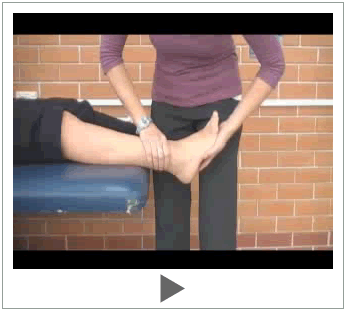- SELF STUDY MODULES
- 1. Intro to TBI
- 2. Communication
- 3. Skills for independence
- 4. Cognitive changes
- 5. Behaviour changes
- 6. Sexuality
- 7. Case management (BIR)
- 8. No longer available
- 9. Mobility & motor control
- 10. Mental health & TBI:
an introduction - 11. Mental health problems
and TBI: diagnosis
& management - 12. Working with Families
after Traumatic Injury:
An Introduction - 13. Goal setting
- 9.0 Aims
- 9.0A Take the PRE-Test
- 9.1 Brain injury and motor symptoms
- 9.2 Common physical presentations
- 9.3 Role of physiotherapy
- 9.4 Physiotherapy interventions
- 9.4a Motor retraining
- 9.4b Prevention of secondary complications
- 9.4c Fitness training
- 9.4d Regular physical activity
- 9.5 How can carers help make physiotherapy happen
- 9.6 Minimising risks
- 9.7 Take home messages
- 9.8 Resources
- 9.9 Take the POST-test
9.2 Common physical presentations
What are some of the common physical presentations you may see following a TBI?
Virtually all parts of the brain participate directly and indirectly in the control of purposeful movement. People who sustain a brain injury may present with one of the types of problems listed below, but more commonly they have a mixture of these presentations.
- i) Weakenss
- ii) Muscle
length - iii) Tone
- iv) Reducted
coordination - v) Ataxia, apraxia,
involuntary movements & tremors
i) Weakness
Weakness may result from the following:
- Damage to the brain causing a reduction in messages from the brain to activate the muscle.
- Disuse of muscles particularly if the person has been in hospital for long time.
- Inability to generate muscle contractions with high intensities necessary to produce fast movement.
Muscles can appear stronger in certain positions which can be quite deceiving. This may be dependent on whether the limb has to be moved against gravity, for example, but can also depend on other factors such as motivation, behaviour and cognition.
ii) Muscle Length and Connective Tissue Changes
Muscle length and connective tissue properties may change due to:
- disuse due to a reduction in active movement
- immobilisation of a muscle and/or joint in a shortened position
Normal motor function will not be possible in the presence of muscle contracture as the adaptations that take place have an adverse effect on both the passive and active properties of the muscle.
 .
.
Picture 1(a) (above) Development of severe contractures of both feet may cause pressure areas and skin breakdown, pain and joint dislocations.
Picture 1(b) (above): Loss of range makes maintaining the hygiene of the hand very difficult and can lead to breakdown of the skin in the palm of the hand. Severe contractures also cause significant pain when attempting to move the fingers for cleaning.
iii) Tone
Tone refers to the resistance of a muscle when it is being passively stretched or lengthened.
Tone results from two general physiological principles:
- intrinsic elastic properties of muscle, tendon and connective tissue
- active contraction of muscle which may be automatic (reflexive) or voluntary
Abnormal tone can take on two forms:
- Hypotonus – reduced tone (i.e. no resistance to movement)
- Hypertonus – increased tone
Increased tone includes:
- Spasticity - where there is an increase in the velocity- dependent stiffness of a muscle. i.e. When stretched slowly, the muscles may offer little resistance, however when stretched quickly, there is a sharp increase in resistance
- Rigidity - where muscles resist lengthening with a force that is independent of velocity.
Video 1a (above)- Muscle tone in an individual without a brain injury.
Click on the image to go to the video player. The video may take a few moments to load.
Video 1b (above) Muscle tone in an individual with a brain injury
Click on the image to go to the video player. The video may take a few moments to load.
iv) . Reduced Co-ordination
Reduced co-ordination may be seen as the inability to selectively isolate the action of muscles within the overall synergy of movement. This results in an inability to shape movements according to the environment and the task. It may take on the appearance of being clumsy.
Video 2. (above) Reduced co-ordination during reaching and manipulation.
Click on the image to go to the video player. The video may take a few moments to load.
v) Ataxia
Ataxia refers to disorders of movement control associated with damage to the cerebellum. The primary feature of ataxia is that movements are poorly controlled and inaccurate with abnormalities in rate, range and force of movement. At the root of this disorder seems to be fundamental problems in predictive timing and modulation of motor output.
Video 3 (Above) Ataxic movements can be seen with the difficulties in reaching and manipulation of small objects.
Click on the image to go to the video player. The video may take a few moments to load.
vi) Apraxia
Apraxia is defined as an inability to perform a goal directed movement which cannot be explained by weakness, incoordination, sensory loss or an inability to understand commands.
It may be classed into:
- Ideational apraxia – where there is a conceptual problem and they do not know what to do. Eg. When given a hammer, they do not know what to do with it, but may be able to identify it verbally.
- Ideomotor/Ideokinetic apraxia – problems with planning of actions. The patient knows what to do, but not how to do it. There is a breakdown in the ordering of a sequence of movement.
vii) Involuntary Movements
These are movements which occur and the patient is unable to prevent them from happening. They may be rapid jerks, slow movements involving different posturing.
viii) Tremors
Tremors are involuntary movements characterised by rhythmic oscillations of a joint or limb. Tremors may be at rest (resting tremor) or occur during voluntary movement (postural or action tremors)




